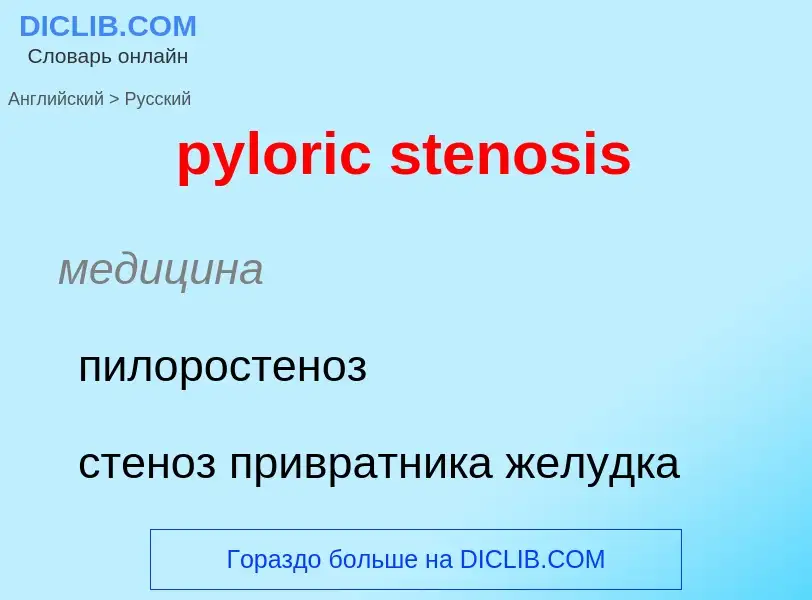Translation and analysis of words by ChatGPT artificial intelligence
On this page you can get a detailed analysis of a word or phrase, produced by the best artificial intelligence technology to date:
- how the word is used
- frequency of use
- it is used more often in oral or written speech
- word translation options
- usage examples (several phrases with translation)
- etymology
pyloric stenosis - translation to russian
медицина
пилоростеноз
стеноз привратника желудка
медицина
врождённый пилоростеноз
медицина
стеноз левого атриовентрикулярного отверстия
стеноз митрального клапана
Definition
Wikipedia
Pyloric stenosis is a narrowing of the opening from the stomach to the first part of the small intestine (the pylorus). Symptoms include projectile vomiting without the presence of bile. This most often occurs after the baby is fed. The typical age that symptoms become obvious is two to twelve weeks old.
The cause of pyloric stenosis is unclear. Risk factors in babies include birth by cesarean section, preterm birth, bottle feeding, and being first born. The diagnosis may be made by feeling an olive-shaped mass in the baby's abdomen. This is often confirmed with ultrasound.
Treatment initially begins by correcting dehydration and electrolyte problems. This is then typically followed by surgery, although some treat the condition without surgery by using atropine. Results are generally good both in the short term and in the long term.
About one to two per 1,000 babies are affected, and males are affected about four times more often than females. The condition is very rare in adults. The first description of pyloric stenosis was in 1888 with surgery management first carried out in 1912 by Conrad Ramstedt. Before surgical treatment most babies died.






![[[Rheumatic heart disease]] at [[autopsy]] with characteristic findings (thickened [[mitral valve]], thickened [[chordae tendineae]], hypertrophied left ventricular [[myocardium]]). [[Rheumatic heart disease]] at [[autopsy]] with characteristic findings (thickened [[mitral valve]], thickened [[chordae tendineae]], hypertrophied left ventricular [[myocardium]]).](https://commons.wikimedia.org/wiki/Special:FilePath/Rheumatic heart disease, gross pathology 20G0013 lores.jpg?width=200)
